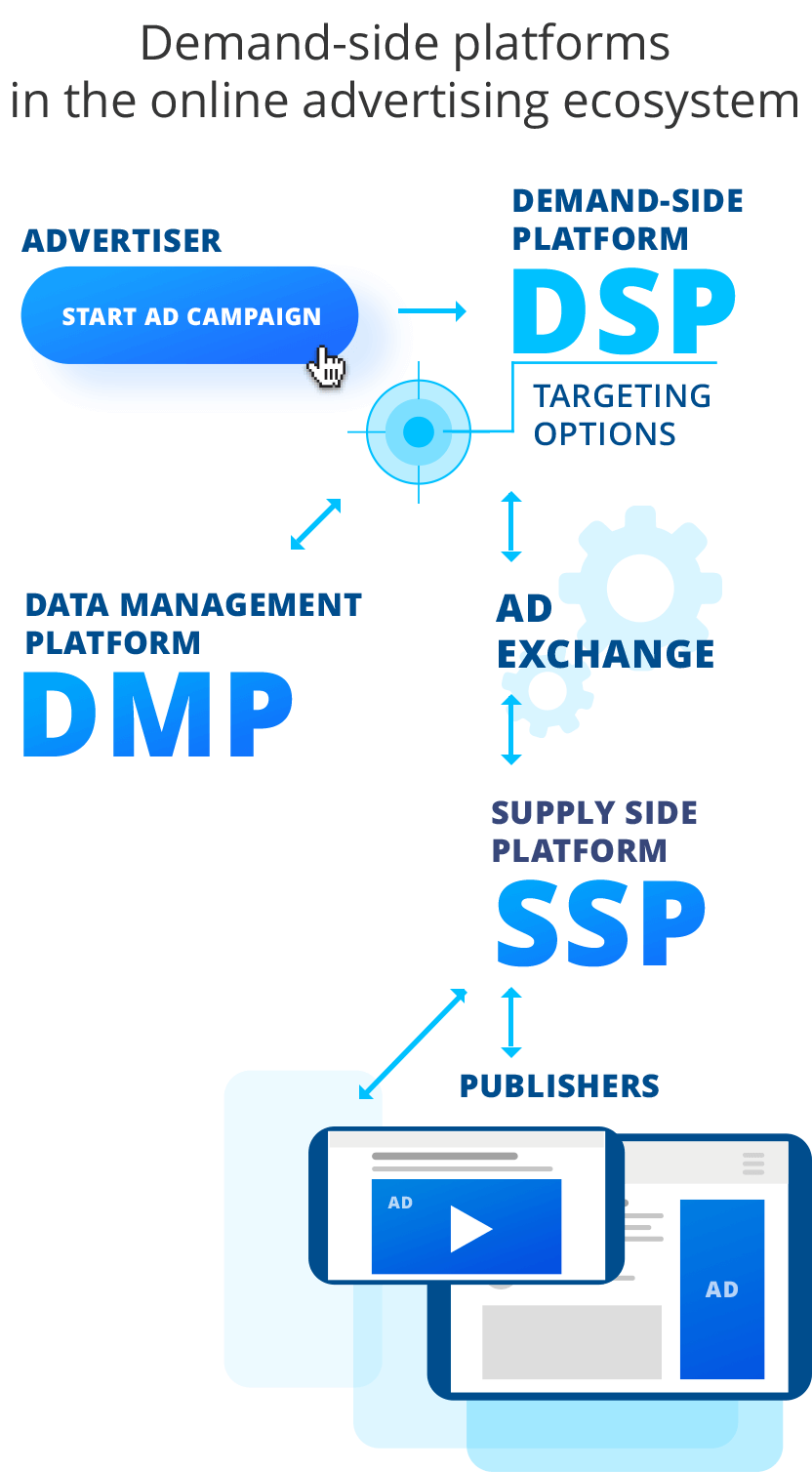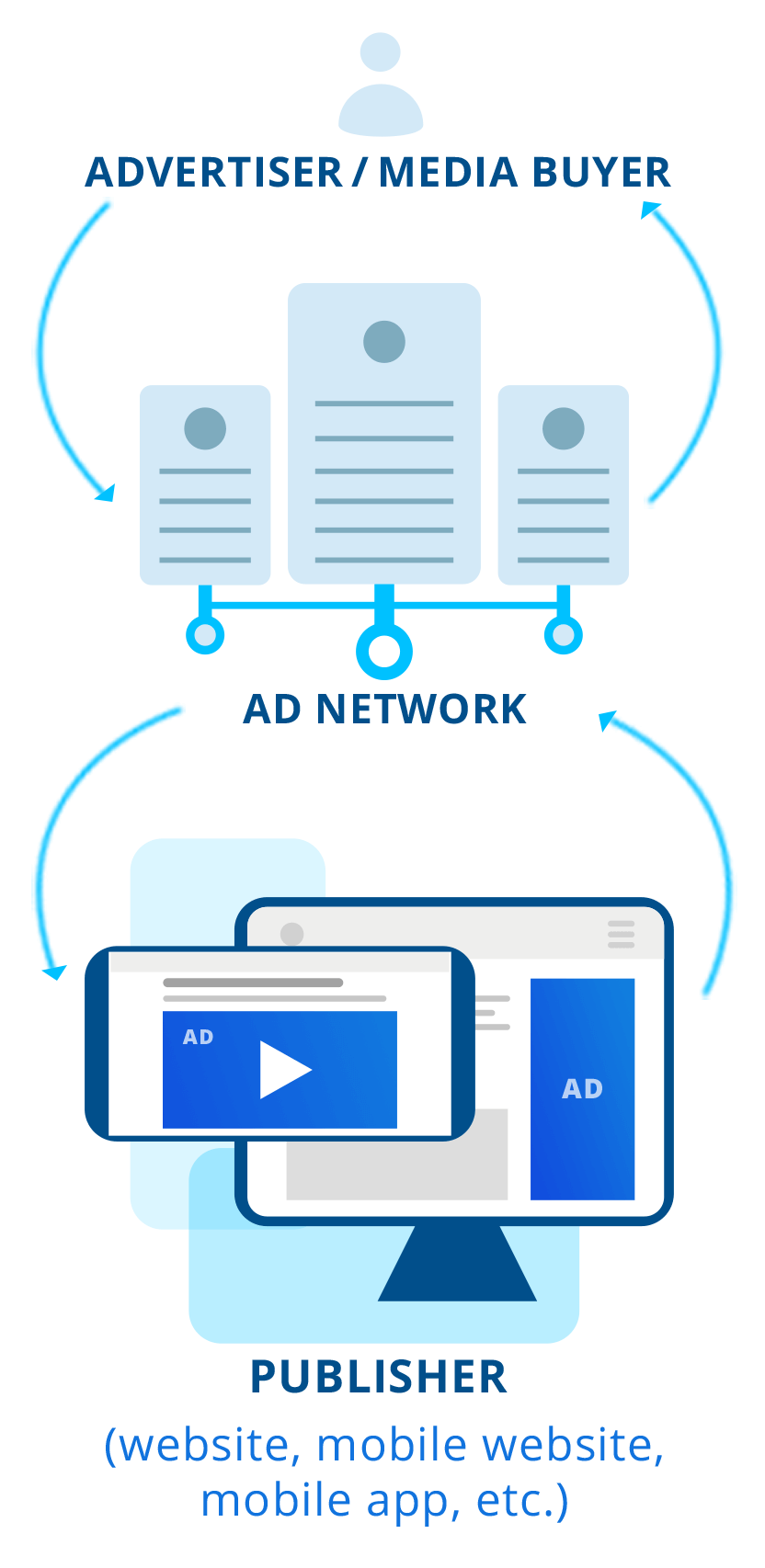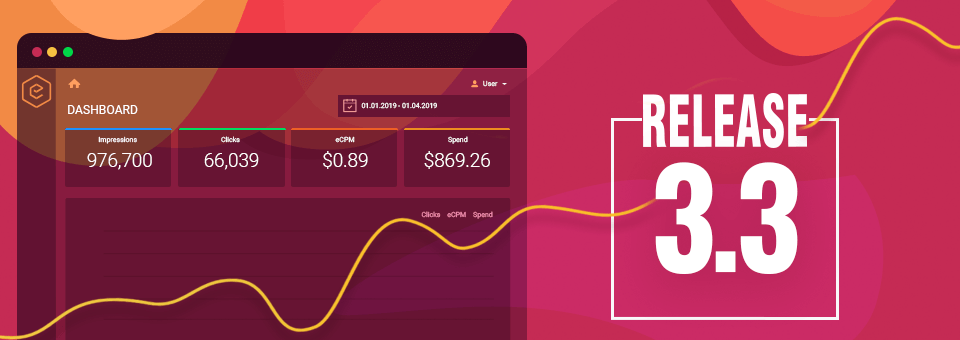
Ad Network vs. Demand-Side Platform: What to Choose for Effective Media Buying?
The ecosystem of digital advertising is always undergoing continuous changes. New technologies and solutions appear every month and they all have their mission focused towards the online advertising world.
This also refers to media buying platforms. From one side of a coin, there are plenty of them — and media buyers can easily find the traffic for even the most whimsical offers. From another side, the online advertising industry is already overcrowded. And sometimes media buyers spend months (and tons of dollars!) to discover traffic sources with a worthy performance.
On this competitive media buying landscape, there are two obvious competitors — ad networks and demand-side platforms. Both of them serve one important goal — to provide access to online inventory/traffic and technical support of the media buying. However, ad networks and DSPs do that have a different approach. We've already explained why you need DSP for programmatic advertising, and in this article, we will compare it with another possible way of buying traffic — ad networks.
Since the 1990s, ad networks started operating as middlemen between websites that wanted to monetize their inventory with ads and advertisers that aspired to promote their products and services online. By the end of the 2000s, programmatic companies appeared on the horizon. Demand-side platforms or DSPs evolved and became the main competitors of ad networks. In 2018 the US invested over $39 billion into programmatic ads — a 81.5% from the total display ad spendings in the entire country.
Many think that demand-side platforms represent the next step of the media buying platforms evolution, however, they are not. With its specific features, DSP is a completely separate branch of the online advertising industry. This is why DSPs can exist side-by-side with the ad networks providing more cost-effective and automated media buying.
In this article, we'll take a closer look on DSPs to explain how demand-side platforms differ from ad networks, uncover their benefits and find out which of the two may bring you to your advertising goals faster.
What is a Demand-Side Platform?
The demand-side platform stands for a technology that allows buying of online impressions from multiple traffic providers in real time. In other words, it's a platform where users may promote their products, services, run performance, and attract new customers or leads.
For media buyers, the demand-side platform is a gateway to hundreds of traffic sources. DSP allows buying traffic from desktop and mobile websites, mobile apps, SSPs and ad exchanges through once interface. With only one DSP in a toolbox, the media buyer can reach its targeted audience through millions of touchpoints at a time.
Most of the DSPs, including Epom Market DSP, are self-serve platforms. That means that the user is in control of the whole media buying process — from campaign setup to daily reports.
DSP opens up extensive optimization opportunities like audience targeting, automated optimization, and live performance reports. For example, the Epom Market DSP has the so-called Bidding Autopilot feature which takes traffic bidding under its full control. It works on "if this then that" basis. Once media buyer sets the ad goals, the platform optimizes performance and automatically moves low-performing publishers to blacklists and increases the bids for good traffic sources. It this way, media buyers can automate their KPIs.
All in all, the DSP is a perfect place to run multiple performance ad campaigns simultaneously with no human-factor aspect. The platform needs milliseconds to deliver the impression and to display results of the ad performance on a dashboard.

What benefit does a demand side platform provide to an advertiser?
1. Cost-effective online advertising and fast ROI
DSP is backed up by the real-time bidding technology. When buying traffic, the media buyer sets a unique bid for every ad and competes for the impression during a real-time auction.
The DSP accepts this bid and offers it to traffic providers — publishers, SSPs and ad exchanges. Then the DSP purchases the impression that ideally matches the targeting parameters of the advertiser. This may sound complicated, however, everything happens with a blink of an eye. With this approach, media buyers pay a fair price for the traffic, get cheaper inventory and achieve KPI targets.
Demand side platforms decide which impressions are most relevant to your ad campaign and this increases the chance of getting ROI faster. Besides, some DPSs can integrate third-party data providers to offer advertisers as much information as possible. With more data comes the opportunity of micro-targeting, more personalized ads, and the higher level of conversions.
2. Complete automation
The demand-side platform allows handling media buying processes automatically. It simplifies the daily routine of media buyers including mass copypasting, connecting to specific SSPs, the constant check of traffic performance, retargeting, report downloading, etc.
With the DSP, there is no need to do everyday optimization and babysitting daily performance reports. The platform defines the best-performing traffic sources and gives them a higher priority while blacklisting publishers with bad results. With the DSP everything is transparent: media buyer sets ad campaign goals and the platform ensures these goals are achieved.
3. Combination of media buys (ad server, anti-fraud protection, viewability, detailed reporting)
When the media buyer decides to benefit from the programmatic advertising, a DSP is a perfect jumping off point and here is why.
Along with a DSP account, the users also get a technology, access to millions of screens around the world, the audience, performance tracking tools, protection against fraud and many more necessary things. You only need two things to be ready — ad creatives and your budgets. Some DSPs even provide the feature of designing your ad units. Epom Market DSP allows the entire branding and designing of native ad unit.
There is no need to use different platforms for buying mobile traffic, desktop impressions or run video ad campaigns. It is possible to do with a single demand side platform. Keeping all ad campaigns in one place helps to understand which creatives work better and which ones are better to be excluded.
Learn how to choose the right DSP and what features to pay attention to.
Now let's move to the advertising networks. If the demand side platforms are aimed at more transparent advertising, ad networks have a way different goal.
What is Advertising Network?
The first ad networks arose as companies that matched advertisers who wanted to promote their products or services with the right audience through ads on specific websites. Of course, since the 1990s ad networks progressed significantly. Nevertheless, in 2019 their mission remains the same — operating as middlemen between the demand and supply sides.
Signing up to a specific ad network, the media buyer gets two things. The first is an access to the online inventory and the second is an account for tracking numbers and the results of ad activities. Up to now, ad network seems to be very similar to DSP, however, it's not really so.
Ad networks provide users with access to accounts with more limited capabilities compared to DSP accounts. This means that the media buyer can only view the stats or pause ad campaigns (not always). And the process of ad campaign set up, connecting to particular publishers, everyday optimization are resting on the shoulders of the manager who stays behind the ad network.
Unlike DSPs, ad networks requires a lot of human work. When media buyers sign up for an account in the ad networks, they get their personal manager. The manager is the one who accepts the creatives and campaign details and then set up the campaign on the ad networks side. So the media buyer saves time on the ad campaign launch.
For the most part, the work of account managers stays invisible. The media buyer only analyzes the statistics on a daily basis. If ad campaigns or creatives need some improvements, the media buyer contacts his personal manager and asks to make changes. The amount of manual work behind traffic buying may vary for different ad networks. Some of them offer better-equipped accounts, while other provide "View only" dashboards to check the statistics.
This approach has both advantages and shortcomings. With ad networks, the media buyer doesn't invest much time in the technical setup or everyday optimization as everything is already done for him (or her), but these services are not free. Usually, ad networks take a high share and media buyers don't know exactly how much they pay to the middleman and how much they pay for the traffic.
With ad networks, a lot of things stay shady. For example, users of ad networks can rarely know the names of publishers that send traffic to their ad campaigns. And they also don't know how much the traffic really costs.
Nevertheless, advertising with ad networks still has some evident benefits for media buyers.
Three Main Benefits of Ad Networks
1. Access to top-ranked and niche publishers
There are different types of ad networks. Topic-specific ad networks have traffic for particular kind of advertising — automotive, fashion, educational, medical-oriented ads. Inventory-specific networks focus on mobile, desktop, video or native inventory only. Top-world websites with millions of daily visitors will more likely to partner with a premium ad network to sell uts traffic. Affiliate networks suit best for running affiliate offers and performance ad campaigns.
The world's top publishers of the CNN or HuffPost level don't trust their inventory to SSPs or ad exchanges. They also don't sell it directly to advertisers. This is why ad networks is the only way to reach premium inventory. Even though, ad networks often help smaller or topic-specific publishers monetize their impressions.
2. Opportunity to pay for clicks and conversions
While DSPs sell traffic for fixed bids, many ad networks work on various pricing models — conversions, installs, and even clicks. In this way, media buyers may save their budgets from low-performing traffic sources. Some ad networks offer two types of accounts — for CPM/CPC ad campaigns and for CPI advertising.
3. Save time on setup and daily optimization
Yet again, ad networks can't be undervalued when it comes to time-efficient media buying. If the media buyer doesn't want to deal with the setup or performance optimization of ad campaigns, ad network would be a perfect choice to run ads.

We've compiled the list of the main features of a DSP and advertising network to show the key differences between them.

Conclusions
To conclude, DSPs and ad networks are absolute must-try options for business that want to grow online. Especially for the ones that have already drained their social media audience. In the next couple of years it's expected that programmatic media buying will continue developing but at a slower pace. Ad networks have all chances to go to oblivion. We don't know for how long DSPs and ad networks are going to coexist, but we'll find this out in the next 5 years.
Leverage your media buying with a self-serve DSP or trust your media buying to ad network professionals.
previous post next post

